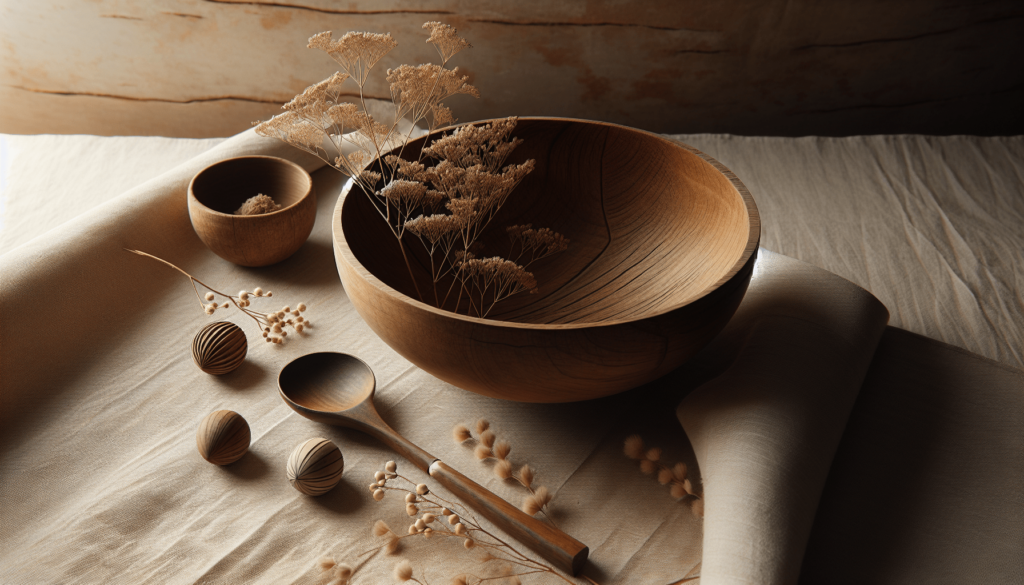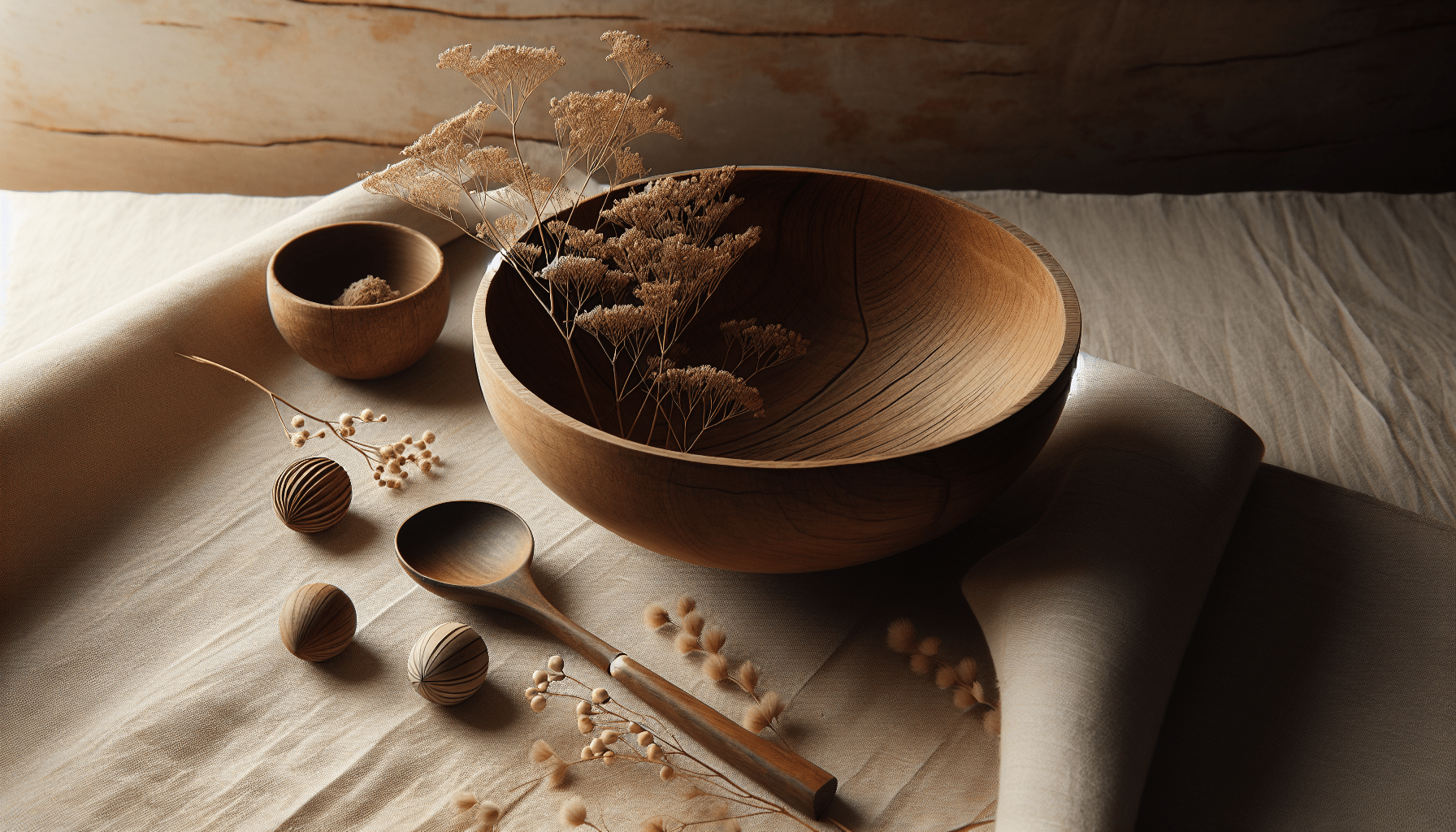What if your living space could reflect the beauty of imperfection? Imagine being surrounded by items that not only serve a purpose but also tell a story, capturing the essence of simplicity and tranquility. This is where the intriguing design philosophy of Japandi comes into play, intertwining with the principles of wabi-sabi.
Understanding Japandi
Japandi is a seamless blend of Japanese and Scandinavian design aesthetics, creating a harmonious environment that celebrates functionality and minimalism. It promotes a sense of calm and order through its use of natural materials, clean lines, and neutral colors. Each piece of furniture and decor item is chosen not only for its purpose but also for its ability to enhance the overall ambiance of a space.
Japanese design emphasizes the beauty of craftsmanship, while Scandinavian design prides itself on functionality and comfort. Together, they create a space where you can find solace amidst the chaos of everyday life.
The Essence of Wabi-sabi
Wabi-sabi is an ancient Japanese philosophy that embraces the beauty found in imperfection, transience, and the natural world. It invites you to appreciate the fleeting nature of life, finding beauty in wrinkles, cracks, and the passage of time. When you integrate wabi-sabi into your living space, you’re not just decorating; you’re fostering an environment that celebrates authenticity.
Key Principles of Wabi-sabi
Imperfection
In wabi-sabi, flaws are celebrated rather than hidden. A handmade ceramic cup that has minor irregularities is valued more than a mass-produced perfect one. Here, you find beauty in the unique characteristics that each item holds.
Simplicity
Simplicity is at the heart of wabi-sabi. It encourages you to declutter your space and focus on the essentials, allowing for tranquility and peace. By choosing fewer items, you can enjoy a more meaningful connection to each one.
Natural Elements
Nature plays a significant role in wabi-sabi. This principle advocates for the inclusion of materials such as wood, stone, and clay, which resonate with organic forms and textures. Bringing the outdoors into your home fosters a connection to the environment and adds warmth to your space.
Transience
Wabi-sabi acknowledges the impermanence of all things. This awareness encourages you to cherish each moment, as nothing lasts forever. It’s about embracing the cycle of life, where beauty exists not only in the outcome but in the journey as well.

How Japandi Incorporates Wabi-sabi Principles
Now that you have a better understanding of both Japandi and wabi-sabi, let’s see how these philosophies intertwine to create a holistic design approach that brings peace and simplicity into your life.
Minimalism Meets Authenticity
Japandi emphasizes a minimalist approach, yet it deeply resonates with the wabi-sabi focus on authenticity. In your home, this might look like choosing handcrafted furniture with a story, rather than opting for something mass-produced. Every piece should serve a purpose while maintaining an organic, unrefined beauty that allows you to appreciate its imperfections.
Example of Authentic Pieces in Japandi
| Item | Description | Wabi-sabi Connection |
|---|---|---|
| Handmade Pottery | Unique shapes and glazes showcasing craftsmanship | Celebrates imperfection |
| Distressed Wood Table | Signs of wear reflecting years of use | Reflects authenticity and history |
| Vintage Linen Sofa | Faded fabric with gentle wear | Embraces simplicity and time |
A Neutral Palette with Natural Touches
In Japandi design, neutral colors are a hallmark, creating a calming backdrop for your space. This palette naturally complements the wabi-sabi principle of simplicity. You can accentuate these tones with natural materials that embody irregularity and warmth.
Color Selection for a Japandi-Inspired Home
| Color Palette | Description | Feelings Evoked |
|---|---|---|
| Soft Beiges | Warm and inviting, promotes comfort | Serenity |
| Greys and Whites | Clean and minimalistic | Tranquility |
| Earthy Greens | Connects you to nature | Grounding |
Integrating plants into your décor is also a fantastic way to embrace this combination. A simple bonsai tree or a potted succulent can add a dash of life and beauty, following the wabi-sabi belief in incorporating the natural world.
Balance of Form and Function
Japandi thrives on the idea of ‘form follows function’. This means that while your living space may look beautiful, each piece serves a purpose, adding to the harmony of your home. This echoes the wabi-sabi principle of finding joy and usefulness in simplicity.
Characteristics of Functional Design in Japandi
| Characteristic | Explanation | Wabi-sabi Aspect |
|---|---|---|
| Multi-functional Items | Furniture that serves more than one purpose | Emphasizes practicality |
| Open Spaces | Airy layouts that enhance flow and calmness | Simplicity and ease of movement |
| Organic Shapes | Curvy forms that feel more inviting | Celebrates nature |
Creating Your Japandi Space
Transitioning to a Japandi-inspired home that embraces wabi-sabi principles doesn’t need to be an overwhelming task. You can gradually implement these ideas to transform your space into a more authentic and peaceful haven.
Start with a Clean Slate
Decluttering is fundamental in both Japandi and wabi-sabi. To create a calming atmosphere, go through your belongings and keep only what truly resonates with you or serves a purpose. Here’s how to get started:
- Set aside time: Dedicate a weekend or a few evenings to go through your items.
- Sort through categories: Tackle one category at a time – clothing, kitchenware, decor, etc.
- Embrace the “four-box method”: Use four boxes labeled “keep,” “donate,” “repair,” and “discard.” This helps streamline decision-making.
By letting go of clutter, you’ll begin to create an open, airy feel that aligns with both Japandi and wabi-sabi philosophies.
Choosing Key Pieces
With a clean slate, it’s time to reintroduce key pieces that embody the essence of Japandi. Focus on quality rather than quantity, selecting items that tell a story and enhance emotional connection.
- Sustainable Furniture: Look for pieces made of reclaimed wood or sustainably sourced materials. Their natural imperfections make them resonate with the idea of wabi-sabi.
- Artisanal Crafts: Investigate local artisans or fairs where you can find handcrafted items that speak to you. A unique vase or bold textile can instill beauty into any corner.
- Comfort Items: Choose textiles that provide comfort while also appealing to the eye, such as soft throws, hanging wall tapestries, or cushions made from organic materials.
Incorporating Natural Elements
To deepen the connection between your space and nature, incorporate natural elements throughout your home.
- Plants: Add a few potted plants or arrange botanical prints that reflect the harmonious beauty of the natural world.
- Natural Light: Make an effort to maximize natural light. Remove heavy drapes and opt for lighter curtains that flutter with a breeze. This brings attention to the changing light and shadow, enhancing the wabi-sabi experience.
- Earthy Textures: Include diverse textures in your furniture and decor. Think rattan baskets, linen curtains, or even stone accents that may show signs of wear or unique patterns.
Embracing Transience
Since both Japandi and wabi-sabi embrace the idea of impermanence, you can reflect this in your home through adaptable decor:
- Changeable Decor: Rotate art pieces, photos, or decor items according to seasons. This promotes awareness of time passing and allows celebration of transient beauty.
- Nature-Inspired Arrangements: Change out arrangements of florals, branches, or leaf displays as they wilt or age. This’ll remind you of the beauty in each moment and the cycle of life.
Mindful Living
Creating a space influenced by Japandi and wabi-sabi involves a shift in mindset towards mindful living. It’s not just about the aesthetics but fostering a holistic sense of well-being that radiates throughout your home.
- Practice Mindfulness: Incorporate rituals such as meditation, breathing exercises, or quiet moments into your daily routine. This enhances your connection to your surroundings and cultivates appreciation for the moment.
- Gratitude Journaling: Start a gratitude journal where you express what you love about your space or what brings you joy daily. This practice reinforces the beauty of the present, enhancing your appreciation of your surroundings.
- Invite Connection: Foster deeper social connections by inviting family or friends over and sharing the stories behind your pieces. This creates community and enriches the emotional depth of your living space.
Conclusion
By embracing the principles of wabi-sabi within the Japandi aesthetic, you’re not just redecorating your home; you’re inviting a philosophy of life that values simplicity, authenticity, and tranquility. Every piece in your space becomes an invitation to appreciate both the beauty of imperfection and the serenity of a minimalist approach.
Transforming your living space to reflect these principles can significantly enhance your emotional well-being, promoting mindfulness and gratitude for the world around you. So take a step toward creating that calming, inspiring environment and let your home become a reflection of who you are at your core.

